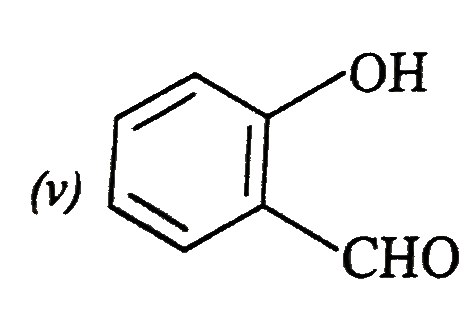CH3Cl(P) CH3CH2Cl(Q) CH3CH2CH2Cl(R) CH3−Cl∣CH−CH3(S)
P>Q>S>R
P>Q>R>S
S>R>Q>P
S>Q>R>P
The correct Answer is:B
Step by step video, text & image solution for underset((P))(CH_(3)Cl)" "underset((Q))(CH_(3)CH_(2)Cl)" "underset((R))(CH_(3)CH_(2)CH_(2)Cl)" "underset((S))(CH_(3)-overset(Cl)overset(|)CH-CH_(3)) by Chemistry experts to help you in doubts & scoring excellent marks in Class 12 exams.
Topper's Solved these Questions
- BOOK - HIMANSHU PANDEYCHAPTER - HALIDESEXERCISE - Level 2 (Q.76 To Q.100)24videos
HALIDES
- BOOK - HIMANSHU PANDEYCHAPTER - HALIDESEXERCISE - Level 2 (Q.101 To Q.125)25videos
HALIDES
- BOOK - HIMANSHU PANDEYCHAPTER - HALIDESEXERCISE - Level 2 (Q.26 To Q.50)25videos
HALIDES
- BOOK - HIMANSHU PANDEYCHAPTER - GENERAL ORGANIC CHEMISTRYEXERCISE - Subjective Type Problems19videos
GENERAL ORGANIC CHEMISTRY
- BOOK - HIMANSHU PANDEYCHAPTER - ISOMERISMEXERCISE - Subjective Type Problems11videos
ISOMERISM
Similar Questions
Knowledge Check
- Question 1 - Select One
The reaction
CH3−CH3∣C∣CH3−ONa+CH3CH2Cl→CH3−CH3∣C∣CH3−O−CH2−CH3
is calledAEtard reactionBGattermann-Kock reactionCWilliamson synthesisDWilliamson continuous etherification process
Select the member of each pair that shows faster rate of SN2 reaction with Kl in acetone.
CH3−C(I)H2−CH2−ClorH3C−C∣CH3(II)H−CH2−Cl
(B) CH3−C(I)H2−CH2−ClorCH3−C(II)H2−CH2−Cl
(C) CH3−C∣CH3(I)H−CH2−CH2−ClorCH3−H3C∣C∣H3C(II)H2−CH2Cl
CH3−CH2−(I)CH2−Br∣CH2−CH3orCH3−C∣H3CH−C(II)H2−Br∣CH3View SolutionCH3−CH∣OH−CH2Cl
View SolutionWrite IUPAC name of the following compound
(a) CH3−CH2−CH∣CH3−CH2CH∣CH2−CH3−CH2−CH2−CH3
(b) CH3−CH3∣C∣CH3−CH2−CH2−CH3∣CH−CH2−CH∣CH3−CH3
(c)_S01_012_Q01.png) View Solution
View SolutionName the following compounds accoring to IUPAC system :
(i) CH3−CH2−CH∣CH2Cl−CH2OH∣CH−CH∣CH3−CH3(ii)CH3−CH∣CH3−CH2−CH∣OH−CH2OH∣CH−CH3
(iii) (iv) H2C=CH−CH∣OH−CH2−CH2−CH3
(iv) H2C=CH−CH∣OH−CH2−CH2−CH3
(v) CH3−C∣CH3=C∣Br−CH2OHView SolutionWrite the IUPAC name of the following compounds:
(i) CH3−CH∣CH3−CO−CH∣CH3−CH3
(ii) CH3COCH2COCH3
(iii)H3C−O∣∣C−CH2−Cl∣CH−CH3
(iv) CH3−CH2∣OH−O∣∣C−CH3
(v) View Solution
View SolutionWrite the common names for each of the following structures:
(i) CH3CH∣ClCH∣CH3CO2H
(ii) CH3CH2βCH∣CH3−αCH∣CH3CO2H
(iii) CH2∣ClCH2CH∣CH3CO2H
Strategy: Use Greek letters (α,β,γ,etc.) to designate the position of the substituents and side-chains attached to the parent chain.View SolutionCH3=C∣Cl=CH−CH2−CH2OH
View Solution

